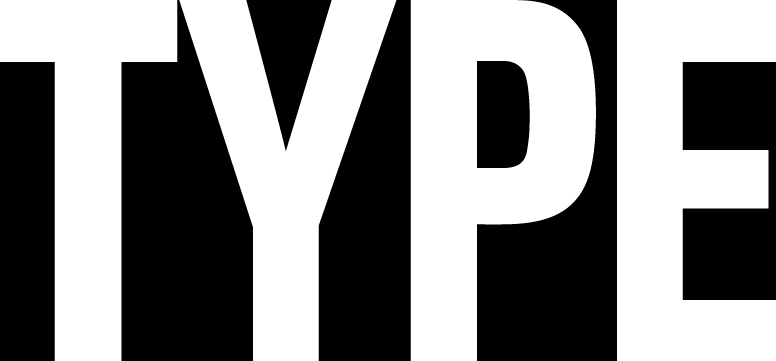The connection between type and culture
The Type Directors Club (TDC) hosted their second-annual “Type Drives Culture” conference recently in New York City’s SVA Theater. The event’s dozen-plus speakers and panelists extolled the reciprocating connection between typography and culture, each adding a new angle or industry to the argument.
After a few opening remarks by Doug Clouse, TDC’s president of the board of directors, and Carol Wahler, TDC’s executive director, Nina Stössinger took the stage to announce Typegeist. The forthcoming digital publication, a new initiative of TDC, will cover “stories of the letters which give form to the narratives of our time,” and is set to launch in Summer. Stössinger, type designer at Frere-Jones Type and member of the TDC Board of Directors, explained the focus of Typegeist by pointing out the duality of type’s popularity: “Typography is considered a niche, nerd subject, but it interacts with so much of what we do.”
Milton Glaser with a poster and alphabet he designed for a gallery of his work.
The conference’s main program began with legendary graphic designer Milton Glaser, who started his talk by admitting that it would be his first on typography: “I’ve always considered it just one of many elements that contribute to a design. But I’ll give it a go!” Drawing from a lifetime of creative works, Glaser shared the times when he chose to be expressive with the type—times when he transmuted letterforms into cylinders, creatures, and architectural spaces.
Milton Glaser, 2001
Glaser commented on the theme of the day by adding, “It’s not so much that type drives culture, but that ideas drive culture and words drive culture… and you build words with type.” A suitable introduction, Glaser’s illustrative examples dove deeper than one might have expected; landing on his “I ♥ NY more than ever” proposal, Glaser told the story of the rejected design, whose black smudge captured the mood post 9/11. A perfect example of type reacting to culture.
After Glaser left the stage, three custom-type customers took turns sharing their stories. Mike Abbink from IBM began with the massive IBM Plex type family, which the company has released free. Plex, developed by Abbink himself, the internal IBM design team, and Bold Monday, supports nearly every script across sans, serif, and mono. “We decided on a combination of man and machine, which to me means natural and engineered,” Abbink said of the inspiration behind the type system. Next, Tyler Smart from Sephora described the needs and uses behind each of the Mucca Design typefaces developed for the brand. The trio concluded with Leland Maschmeyer of Chobani. Chobani, lauded by its fans as being more than “just another yogurt company,” needed, according to Maschmeyer “to evolve from the idea of simplicity meaning ‘modern and sleek’ to the idea of simplicity meaning ‘innocent’.” Their typeface, designed by Berton Hasebe and Commercial Type, started from Times New Roman before chasing “imperfection,” which Maschmeyer lists as “an intentional aspect of [the Chobani] brand.”
Matteo Bologna, Leland Maschmeyer, Tyler Smart, Mike Abbink, Christian Schwartz, and Elizabeth Carey Smith
When their stories concluded, Matteo Bologna of Mucca Design, Christian Schwartz of Commercial Type, and event host and TDC board member Elizabeth Carey Smith joined the three on stage for a panel. Conversation sprawled from topic to topic, touching on honorably sourcing design materials, effectively pitching type designs, and consciously fostering office diversity.
Before lunch, the conference turned toward the underground with talks by Steven Heller and Dan Rhatigan. Heller told stories of balancing competing demands—scarce funds, limited technology, artistic honesty, distribution—in the early days of New York’s East Village zine printing. Rhatigan then broke down the typography and graphic design of gay magazines, examining how easy access to the means of production has impacted the industry.
Brian Roettinger, 2017
The subversive theme continued after the break with Brian Roettinger’s presentation on Los Angeles' punk music zine Slash, from the late-70s. Roettinger moved from Slash, the topic of his latest book, to his recent work and stories designing some of the music industry’s most acclaimed album covers and campaigns, including Childish Gambino’s “Awaken My Love” and Jay-Z’s “Magna Carta / Holy Grail” and “4:44.”
The next talk, Type in Couture, looked again at magazines, but instead of the underground, gay, or music varieties, Elizabeth Carey Smith analyzed the evolving style of fashion magazines. From delicate scripts to trendy geometric sans serifs, Carey Smith explained trends of fashion rebranding among both fashion labels, such as Calvin Klein, and fashion publications, such as Vogue. Next, Smith’s survey turned to clothes and accessories and typographic landscapes, offering Louis Vuitton’s recognizable LV monogram as an essential example.
Emily Oberman
One of the day’s liveliest presentations, delivered by award-winning Pentagram partner Emily Oberman, tackled what it means to be a woman designer today, with an emphasis on social responsibility and counter-intuitive designs. Oberman explained how, with some of her work, rejecting stereotypically feminine design can yield a more empowering and attractive result—a lesson Oberman perhaps learned from her parents: “Growing up, I wasn’t allowed to watch anything that said women were worse than men. I also wasn’t allowed to watch any poorly animated cartoons.” Touching on the goals of any socially-minded design, she explained that “it has to be more than just a poster… you need to make people commit to change.”
To close the event, Debbie Millman interviewed Matthew Carter for a live recording of Design Matters, an industry-leading podcast. The witty and informative conversation dove first into Carter’s childhood, when his “poor” penmanship and active mother planted the seeds of type design: “[My handwriting was poor], so as a young boy I started laboriously drawing the outlines and filling them in, which is type design. […] To teach me to read, my mum cut individual letters out of… I think it was linoleum.” After hearing Carter’s early influences, Millman asked him about his official typographic beginning cutting punches for Enschedé, where he learned already-obsolete processes and various tricks-of-the-trade largely since forgotten (smoke proof, anyone?).
Near the end of the conversation, Carter shared his creative process and what separates him from the “true geniuses in the field.” Millman contested Carter’s self-assessment as “not a genius,” asking the audience, “Are you buying this?” Carter humbly differentiated himself from those whose individual voices permeate their work—as in the case of Frutiger or Zapf—by saying that he thinks of himself as more of a “chameleon” who can adapt to the needs of the project, leaving no trace of his personal predilections. Carter then told the story of the one time he tried to let “inspiration” guide his work: “I sat down and put on some Bob Dylan music and said, ‘Okay, Bob, give me an A.’ Nothing. ‘How about a B for Bob?’ Nothing. Inspiration didn't work for me.” The conversation ended with a deliberation on Carter’s future: “It’s good to know people still expect something from me! […] I will keep doing this for the rest of my life.”
Type Drives Culture brought together some of typography and graphic design’s biggest names, and the presentations examined both brand-level interactions—like that of Chobani and Calvin Klein—and national conversations on gender and homosexuality. The conference, both fun and thoughtful, fulfilled its title, extolling the links between type and culture.













